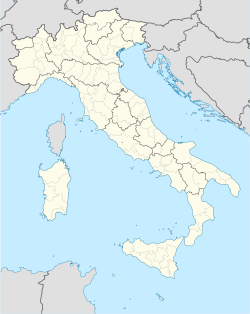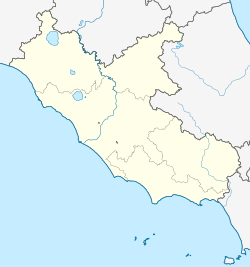Priverno | |
|---|---|
| Comune di Priverno | |
 View of Fossanova Abbey | |
| Coordinates: 41°28′N13°11′E / 41.467°N 13.183°E | |
| Country | Italy |
| Region | Lazio |
| Province | Latina (LT) |
| Frazioni | Boschetto, Casale, Case Alloggio Ferrovieri, Ceriara, Colle Rotondo, Colle San Pietro, Colle Sughereto, Fascia, Fornillo, Fossanova, Gricilli, Le Crete, Maccalè, Mezzagosto, Montalcide, Osteria dei Pignatari, Perazzette, Pruneto, San Martino, Stazione Fossanova, Stradone Grotte |
| Government | |
| • Mayor | Anna Maria Bilancia (Civic list) |
| Area | |
• Total | 56.98 km2 (22.00 sq mi) |
| Elevation | 151 m (495 ft) |
| Population (31 May 2022) [2] | |
• Total | 13,668 |
| • Density | 239.9/km2 (621.3/sq mi) |
| Demonym | Privernati or Pipernesi |
| Time zone | UTC+1 (CET) |
| • Summer (DST) | UTC+2 (CEST) |
| Postal code | 04015 |
| Dialing code | 0773 |
| Patron saint | St. Thomas Aquinas |
| Saint day | March 7 |
| Website | Official website |
Priverno is a town, comune in the province of Latina, Lazio, central Italy. It was called Piperno until 1927.
Contents
It has a station of the Rome-Naples railway mainline. Nearby is the Monti Lepini chain. It was the birthplace of the canonist Reginald of Piperno.



